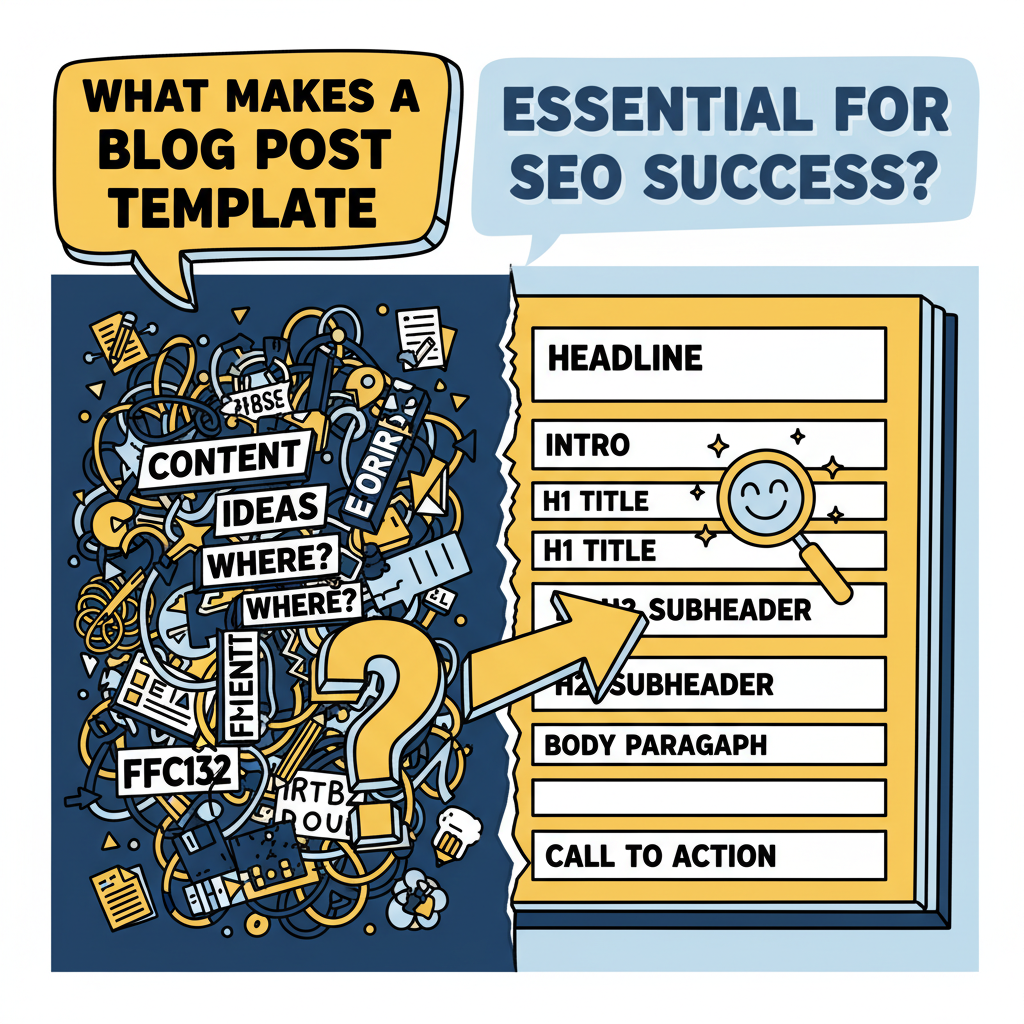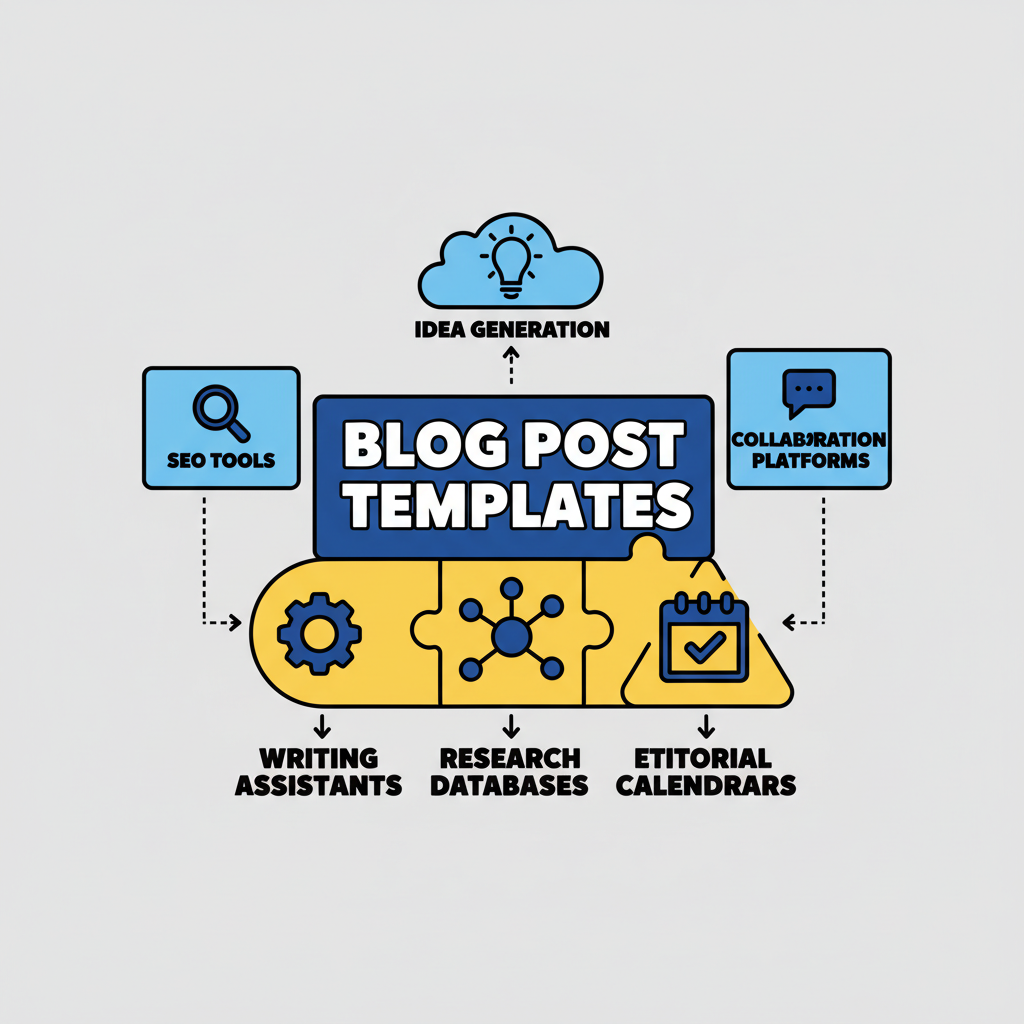What Makes a Blog Post Template Essential for SEO Success?
Posted by
How to Create the Perfect Blog Post Template That Drives Organic Traffic

Creating consistent, high-quality blog content can feel overwhelming without the right structure in place. A well-designed blog post template serves as your roadmap to producing engaging, SEO-optimized content that resonates with readers and search engines alike. In this comprehensive guide, you'll discover how to build a proven blog post template that streamlines your content creation process while maximizing your organic traffic potential.
What Makes a Blog Post Template Essential for SEO Success?

A blog post template is more than just a writing framework—it's your strategic foundation for creating content that performs. When you establish a consistent structure, you ensure every piece of content includes essential SEO elements while maintaining readability and engagement.
The most effective blog post templates incorporate proven content marketing principles with search engine optimization best practices. This combination helps you create posts that not only rank well in search results but also convert visitors into loyal readers and customers. By standardizing your approach, you eliminate guesswork and reduce the time spent on each post while improving overall quality.
Professional content creators understand that templates provide consistency across their content library. This consistency helps build trust with both readers and search engines, as your audience knows what to expect from your content, and search algorithms can better understand your site's topical authority.
How to Structure Your Blog Post Template for Maximum Impact?
Start with a Compelling Header Section
Your blog post template should begin with a header section that includes your main headline, meta description, and target keywords. This section serves as your content blueprint, ensuring you stay focused on your primary topic throughout the writing process.
Include fields for your primary keyword, secondary keywords, and target audience in this section. This information guides your content creation and helps maintain SEO focus. Additionally, plan your internal and external linking strategy at this stage to ensure natural integration throughout your post.
Design an Engaging Introduction Framework
Your introduction template should follow a proven formula: hook, problem identification, and solution preview. Start with an attention-grabbing statement or question that immediately connects with your reader's needs or interests.
The problem identification section acknowledges the challenge your audience faces, while the solution preview outlines what they'll gain from reading your complete post. This structure ensures your introductions consistently engage readers and encourage them to continue reading.
What Essential Elements Should Every Blog Post Template Include?

Content Structure Components
| Template Element | Purpose | SEO Benefit |
|---|---|---|
| Header Tags (H1-H3) | Organize content hierarchy | Helps search engines understand structure |
| Meta Title & Description | Search result display | Improves click-through rates |
| Internal Links | Connect related content | Distributes page authority |
| External Links | Provide authoritative sources | Builds credibility and trust |
| Call-to-Action | Guide reader next steps | Improves engagement metrics |
SEO Optimization Features
Your blog post template must include dedicated sections for SEO optimization. Create placeholders for your target keywords, ensuring they appear naturally in your headline, introduction, subheadings, and conclusion. This strategic placement helps search engines understand your content's focus without compromising readability.
Include a section for image optimization within your template. Plan for relevant images with descriptive alt text that supports your main topic. Visual content not only enhances reader engagement but also provides additional opportunities for search engine visibility through image search results.
When implementing fast SEO strategies, your template becomes even more crucial for maintaining consistency while accelerating your content production timeline.
How to Build Content Sections That Engage and Convert?
Create Value-Driven Body Content
Your main content sections should follow a logical progression that delivers on your introduction's promises. Structure each section with clear subheadings that incorporate relevant keywords while remaining reader-friendly. Use bullet points and numbered lists to break up text and improve scanability.
Each content section should provide specific, actionable information that moves readers closer to solving their problems. Include examples, case studies, or practical tips that demonstrate real-world application of your advice. This approach builds trust and encourages readers to view your content as authoritative.
Develop a Strong Conclusion Template
Your conclusion template should accomplish three key objectives: summarize main points, reinforce the value provided, and guide readers toward the next action. Create a framework that naturally recaps your most important insights while connecting back to your introduction's promises.
Include a clear call-to-action that aligns with your content goals. Whether you're encouraging newsletter signups, product trials, or further reading, make your desired action obvious and compelling. This strategic approach to conclusions can significantly impact your content's conversion potential.
What Tools and Resources Support Effective Blog Post Templates?

Template Management Systems
Professional content creators often use content management tools that support template creation and reuse. These platforms allow you to save your proven blog post template structure and apply it to new content quickly. Look for tools that integrate with your content management system and support collaborative editing if you work with a team.
Consider using automated content strategies to streamline your template implementation. Automation can help ensure consistency while reducing the manual effort required for each new post.
Quality Assurance Checklists
Develop a quality assurance checklist that accompanies your blog post template. This checklist should cover SEO elements, readability factors, and engagement components. Include items like keyword density checks, internal linking verification, and call-to-action placement review.
According to Content Marketing Institute's research, organizations with documented content strategies are significantly more likely to consider themselves effective at content marketing. Your template and checklist serve as key components of this documentation.
How to Customize Your Blog Post Template for Different Content Types?
Adapt Templates for Various Formats
While maintaining core SEO elements, customize your blog post template for different content formats. How-to guides require step-by-step sections, while listicles need numbered points with detailed explanations. Case studies benefit from problem, solution, and results sections.
Create template variations that maintain your brand consistency while accommodating different content styles. This flexibility ensures you can address various search intents and audience preferences without starting from scratch each time.
Industry-Specific Modifications
Consider your industry's unique requirements when developing your blog post template. Technical topics might need more detailed explanations and citations, while creative industries could benefit from more visual elements and storytelling components.
Research shows that organic traffic growth depends heavily on content relevance and quality. Your template should reflect industry best practices while maintaining broad appeal to your target audience.
How to Measure and Improve Your Blog Post Template Performance?
Track Key Performance Metrics
Monitor how content created with your blog post template performs across important metrics. Track organic traffic growth, time on page, bounce rate, and conversion rates for posts using your template. This data helps identify which template elements contribute most to success.
Use tools like Google Analytics and Google Search Console to gather performance data. Look for patterns in your highest-performing content to identify template elements that consistently drive results. This analysis informs template refinements and improvements over time.
Iterate Based on Results
Your blog post template should evolve based on performance data and changing SEO best practices. Regular template updates ensure your content remains competitive and effective. According to Google's Search Quality Guidelines, content quality and user experience continue to be primary ranking factors.
Test template variations to identify improvements. Try different introduction styles, content organization methods, or call-to-action placements. Small changes can yield significant improvements in engagement and search performance.
Conclusion
A well-crafted blog post template is your secret weapon for creating consistent, high-performing content that drives organic traffic and engages your audience. By incorporating the essential elements outlined in this guide—from SEO optimization features to engagement-focused content structures—you'll streamline your content creation process while improving results.
Remember that the best blog post template is one that evolves with your audience's needs and search engine requirements. Start with these proven frameworks, measure your results, and continuously refine your approach based on performance data.
Ready to accelerate your content marketing success? Implement these blog post template strategies today and watch your organic traffic grow. For additional insights on optimizing your content strategy, explore our comprehensive guide on strategic keyword research for organic growth.